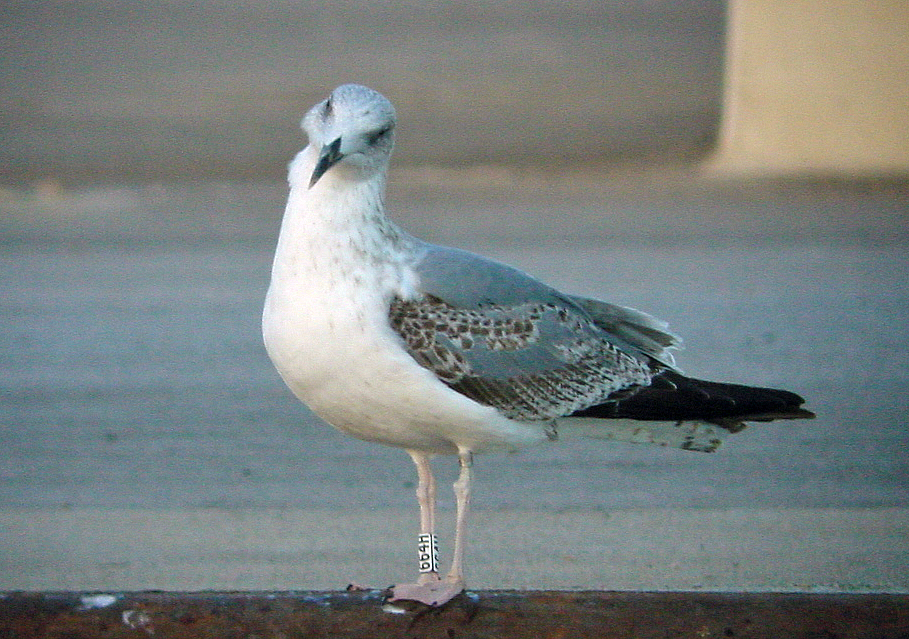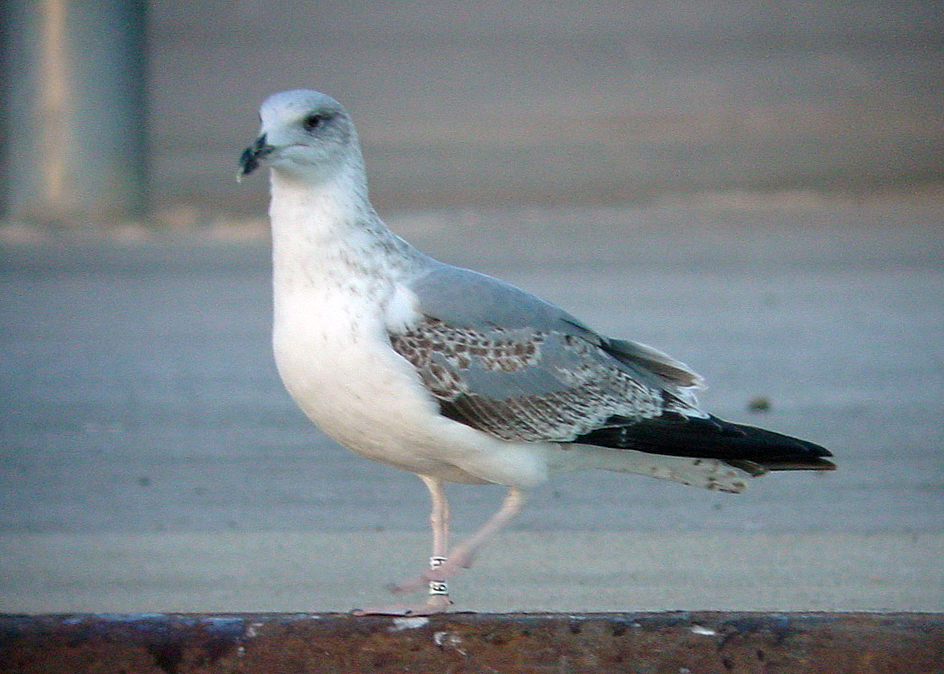 Yellow-legged
Gull - Larus michahellis
Yellow-legged
Gull - Larus michahellis
(last update: October 08 2013)
Coordinators:
Delfín González
Gabriel Martín
Antonio Gutierrez
Amir Ben Dov
Mars Muusse
Yellow-legged Gull michahellis 2CY 664H November 27 2003, Port-la-Nouvelle, S France (43°00'N - 3°04'E).

All summer, 2CY michahellis are in
complete moult, replacing all feathers, which eventually will bring
birds in so-called "second winter" plumage by October. After
completion, the head will show limited neat fine streaking and the
under-parts and rump turn pale, with some mottled brown at the flanks.
From early April, the inner primaries are shed and new second generation
primaries grown in. On average, 2CY michahellis shed the last
juvenile primary (P10) by the first week of August. The majority of michahellis complete the primary moult by the first week of October, when the new
second generation P10 is fully grown. The new primaries are dark with a
tiny pale tip on the fresh flight-feathers. In michahellis, second
generation primaries show some contrast between outer and inner primaries:
the three inner primaries show a pale inner-web and brownish outer-web
(the black shaft-streak well visible), while the outer primaries have the
outer-web blackish brown and the pale greyish brown inner-web still
visible at P7.
The under-wing is largely pale with brown lesser under-wing coverts and
brown lines running over the tips of the median coverts. The second
generation tail-feathers show a clear-cut wedge-shaped blackish tail-band
with only isolated blackish markings on the white basal half of the
central rectrices. The outer tail-feathers normally show no isolated black
markings and in general the outer-webs are often clean white except the
sub-terminal band. The rump is largely white. The iris is pale brown. The
bill shows a pale pinkish base and often the very tip is translucent
white. The legs are salmon-pink with a yellow hue.
At the end of the complete moult, a partial moult takes place in September
and October. In this partial moult, 2CY birds normally include some
feathers, which were replaced first in line in the complete moult of last
summer (in May): upper tertials, median coverts, inner greater coverts and
randomly some lower lesser coverts.
664H is a strong, powerful bird, probably a male. It's a slightly advanced looking 2CY michahellis in November, with extensive grey adult-like feathers in the scapulars and wing-coverts. The head and hind-neck show streaking and mottling and the bill looks immature as well, but the under-parts are plain white. Primary P10 is fully grown. After the complete moult, a partial moult included upper tertials and some wing-coverts: inner greater coverts are fresh grey and most of the visible median coverts have been replaced. About eight lower lesser coverts have been replaced recently, all showing a pattern similar to the inner greater coverts. Partial moult in the lesser coverts has been random.
